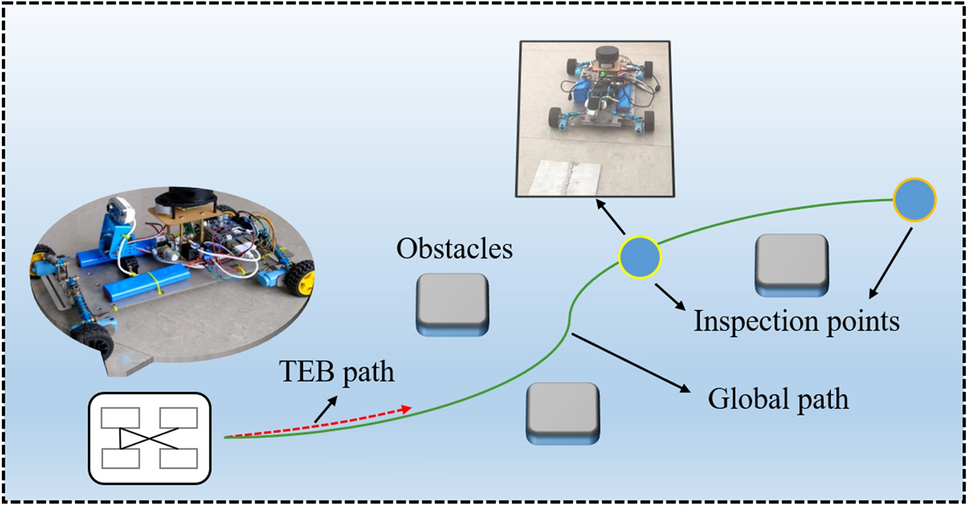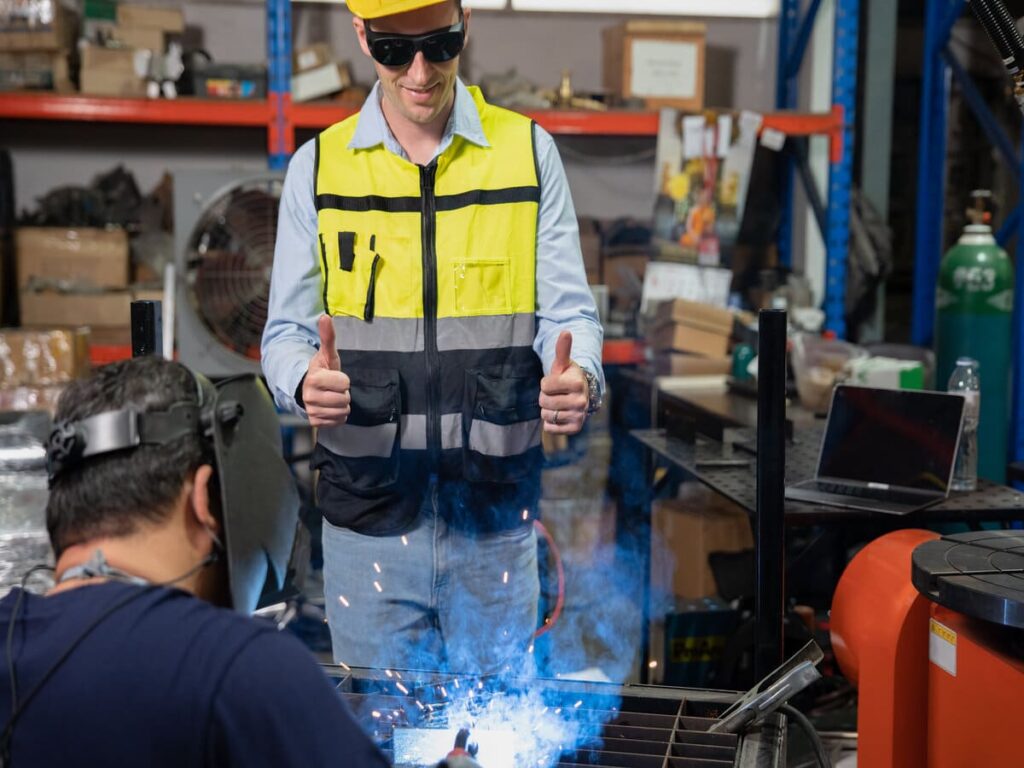Essential Tips for Effective Welding Inspection Racine Services
Essential Tips for Effective Welding Inspection Racine Services
Blog Article
Ingenious Strategies to Fillet Weld Examination and Screening: Enhancing Weld Top Quality and Compliance Standards
In the world of welding, the high quality and integrity of fillet welds play an essential duty in guaranteeing the architectural strength and reliability of numerous industrial parts. With the continuous drive for improved performance and compliance with strict requirements, the expedition of ingenious strategies to fillet weld assessment and testing has come to be critical.
Advanced Non-Destructive Screening Techniques
Utilizing modern innovations, advanced non-destructive testing approaches play an important duty in ensuring the integrity and top quality of fillet welds. These approaches, such as phased range ultrasonic screening (PAUT) and magnetic particle testing (MPT), deal detailed insights into the weld's internal structure without triggering any kind of damage to the material. PAUT, for circumstances, makes use of multiple ultrasonic aspects to evaluate the weld from numerous angles, providing a detailed visualization of possible defects like lack of combination or splits.
Similarly, MPT works in finding surface-breaking problems by using a magnetic area and iron fragments to the weld location. This method is particularly helpful for determining stoppages that may compromise the weld's strength. By employing these advanced non-destructive testing methods, weld examiners can precisely examine the top quality of fillet welds, making certain conformity with sector requirements and guidelines. The capacity to identify imperfections early on not only enhances weld top quality yet likewise avoids expensive rework or failings in architectural stability, highlighting the importance of these innovative testing approaches in welding examinations.
Robotics and Automation in Assessment
The integration of robotics and automation has actually transformed the inspection procedure for fillet welds, enhancing effectiveness and accuracy in quality analysis. Robotics offer accurate control and repeatability in examining welds, ensuring trustworthy and constant outcomes. Automated systems can be programmed to adhere to particular examination paths, making certain comprehensive coverage of welds and lowering the risk of human mistake.
Robot evaluation systems outfitted with advanced sensing units can identify and measure weld functions with high accuracy, giving in-depth information for analysis. These systems can determine issues such as fractures, absence of fusion, and porosity, making it possible for timely corrective actions to be taken. In addition, robotics and automation allow for real-time data collection and evaluation, offering instant comments to drivers and facilitating quick decision-making processes.
Moreover, making use of robotics and automation in fillet weld inspection enhances general productivity by reducing assessment times and increasing evaluation throughput. By streamlining the inspection process, producers can make sure weld top quality and conformity standards are fulfilled efficiently, ultimately causing set you back financial savings and boosted item top quality.
Making Use Of Artificial Knowledge for Analysis
Man-made knowledge plays a crucial role in enhancing the performance and precision of evaluation in fillet weld assessment processes. By utilizing the power of AI, assessors can enhance the analysis of weld high quality and compliance standards, resulting in more reputable and accurate results. AI formulas can quickly refine huge quantities of data from weld evaluations, spotting defects or inconsistencies that might be challenging to understand the nude eye. This innovative modern technology allows real-time surveillance of weld top quality, enabling for immediate rehabilitative activities to be taken if any issues are spotted.
In addition, AI systems can gain from previous examination data, continuously boosting their ability to determine possible problems and inconsistencies in fillet welds. This adaptive knowing capacity boosts the overall quality assurance procedure, lowering the likelihood of human mistake and making certain that welds meet the required requirements. By integrating expert system into fillet weld evaluation, sectors can attain higher levels of performance, uniformity, and conformity in their examination practices.
Portable Equipment for On-Site Evaluation
 Enhancing field examination efficiency, the adoption of portable tools reinvents on-site analysis procedures for fillet welds. These devices offer flexibility and convenience, allowing examiners to carry out thorough assessments in numerous areas, consisting of tough or remote settings. Mobile devices such as ultrasonic testing tools, magnetic particle visit here inspection equipment, and digital radiography systems provide real-time data and high-resolution imaging capabilities, making it possible for quick decision-making and prompt responses on weld top quality.
Enhancing field examination efficiency, the adoption of portable tools reinvents on-site analysis procedures for fillet welds. These devices offer flexibility and convenience, allowing examiners to carry out thorough assessments in numerous areas, consisting of tough or remote settings. Mobile devices such as ultrasonic testing tools, magnetic particle visit here inspection equipment, and digital radiography systems provide real-time data and high-resolution imaging capabilities, making it possible for quick decision-making and prompt responses on weld top quality.One substantial benefit of portable tools is their ability to streamline inspection treatments, lowering downtime and boosting general efficiency. Inspectors can easily transport these devices to various task sites, eliminating the demand for moving hefty machinery or you can try this out components to off-site centers. Furthermore, the mobility of these tools advertises cost-effectiveness by minimizing transport expenses and speeding up evaluation timelines.
Furthermore, the use of mobile tools for on-site examination advertises proactive top quality control procedures, as inspectors can without delay determine and deal with any kind of prospective welding defects or inconsistencies. By incorporating these cutting-edge innovations right into on-site examination practices, welding specialists can ensure conformity with industry criteria and enhance weld high quality, ultimately causing improved structural honesty and security in numerous welding applications.
Combination of Data Administration Solution
Having enhanced on-site examination processes with the utilization of portable devices, the following stage entails the seamless assimilation of data administration systems to better enhance effectiveness and information evaluation capabilities in fillet weld evaluation and screening. Welding Inspection Racine. By incorporating data monitoring systems right into the assessment procedure, companies can streamline information collection, storage space, and evaluation. This integration enables real-time tracking of weld top quality, prompt identification of flaws, and punctual decision-making to correct any type of concerns that may arise during the evaluation process
Information administration systems play a crucial role in centralizing evaluation information, facilitating easy access for licensed personnel, and guaranteeing data integrity and safety. With the combination of these systems, examiners can produce detailed reports, track historical information for fad evaluation, and enhance general process efficiency. Furthermore, the integration of information monitoring systems allows seamless interaction between various stakeholders associated with the inspection process, cultivating cooperation and enhancing general quality assurance procedures. Ultimately, the combination of data monitoring systems serves to boost the requirements of fillet weld evaluation and screening, making sure conformity click for more info with industry laws and improving weld quality.
Verdict
To conclude, cutting-edge methods to fillet weld assessment and screening have dramatically improved weld high quality and conformity criteria. Advanced non-destructive testing techniques, robotics, automation, expert system, mobile devices, and data management systems have changed the way weld evaluations are carried out. By utilizing these innovations, sectors can make certain that welds meet the required high quality requirements and guidelines, inevitably boosting total performance and safety in welding processes.

By employing these advanced non-destructive testing techniques, weld inspectors can accurately evaluate the quality of fillet welds, guaranteeing compliance with industry criteria and laws. Mobile devices such as ultrasonic testing devices, magnetic particle evaluation equipment, and electronic radiography systems provide real-time information and high-resolution imaging capacities, enabling quick decision-making and immediate feedback on weld top quality.
Having actually enhanced on-site evaluation processes with the use of mobile devices, the next phase entails the smooth combination of information management systems to better improve effectiveness and data evaluation abilities in fillet weld evaluation and screening (Welding Inspection Racine). Inevitably, the combination of information administration systems serves to boost the requirements of fillet weld inspection and screening, making sure compliance with sector policies and improving weld high quality
 In verdict, ingenious approaches to fillet weld examination and screening have dramatically improved weld quality and conformity requirements.
In verdict, ingenious approaches to fillet weld examination and screening have dramatically improved weld quality and conformity requirements.Report this page